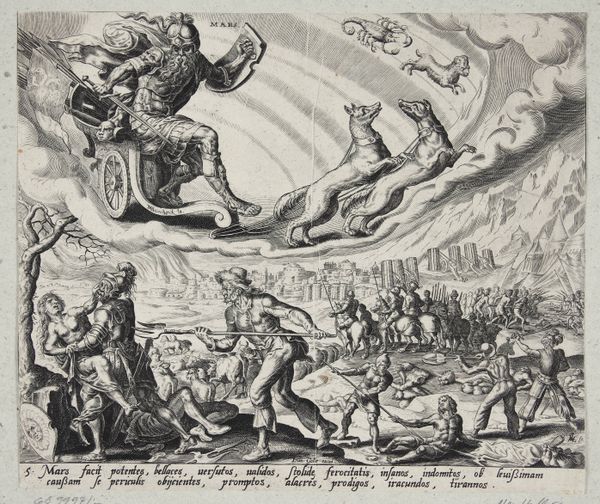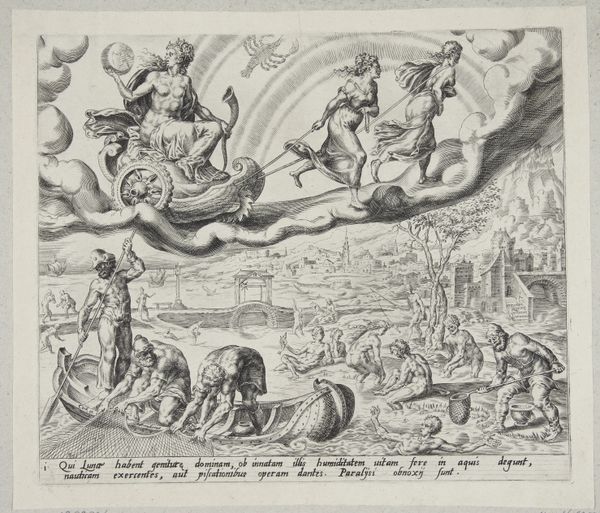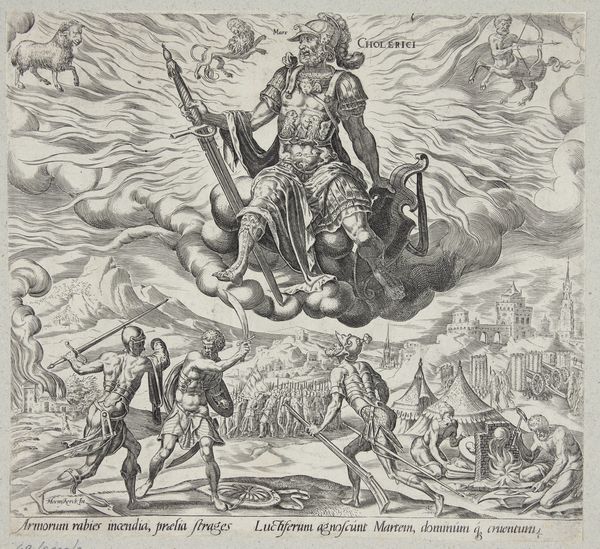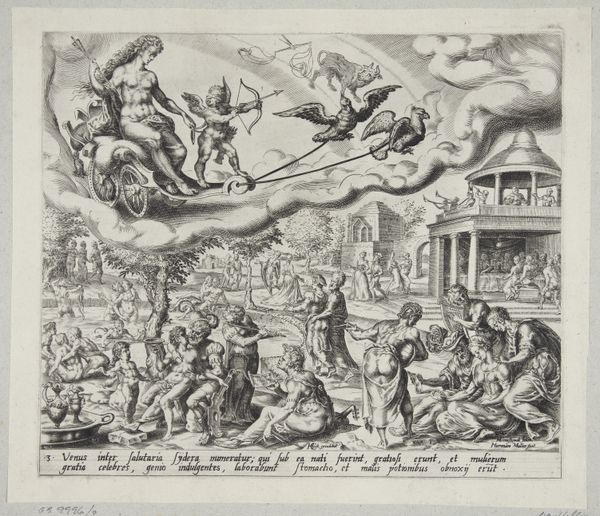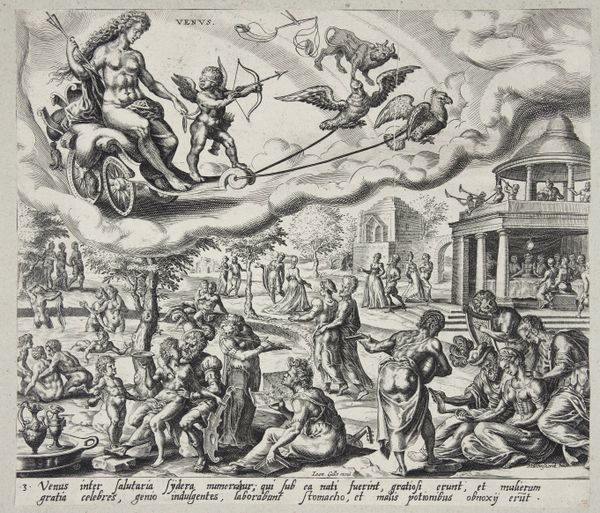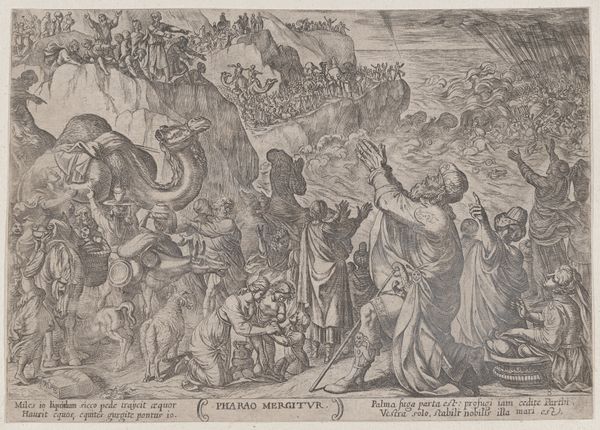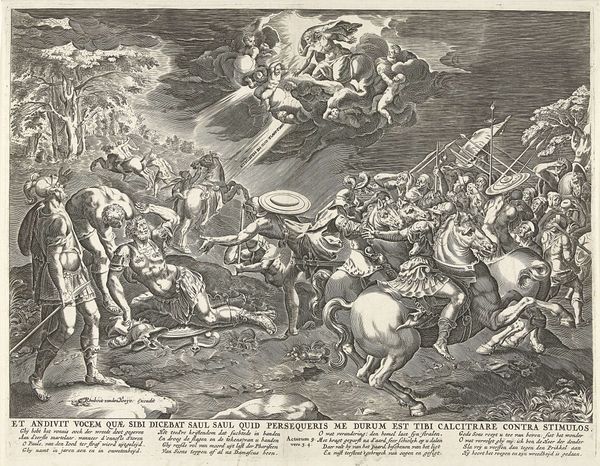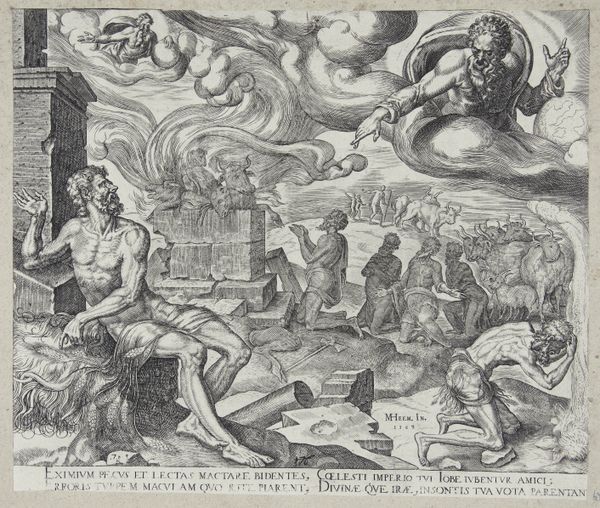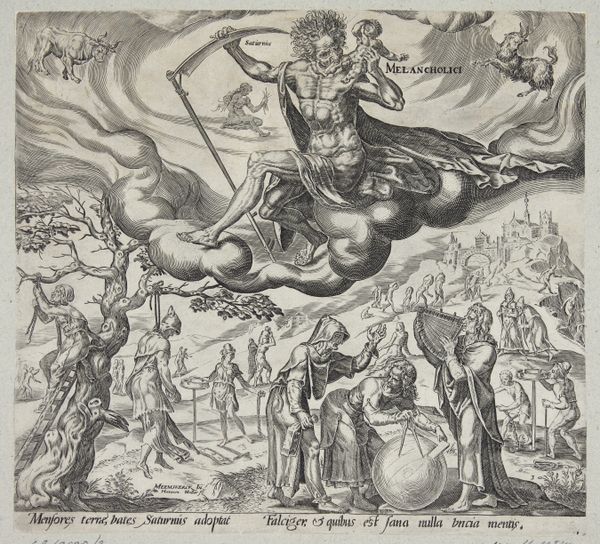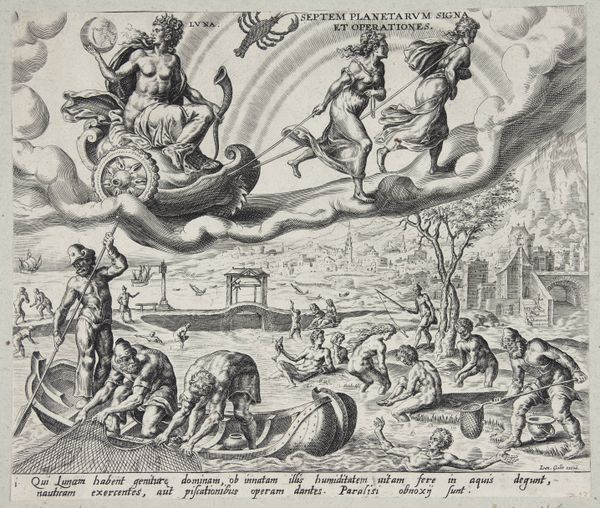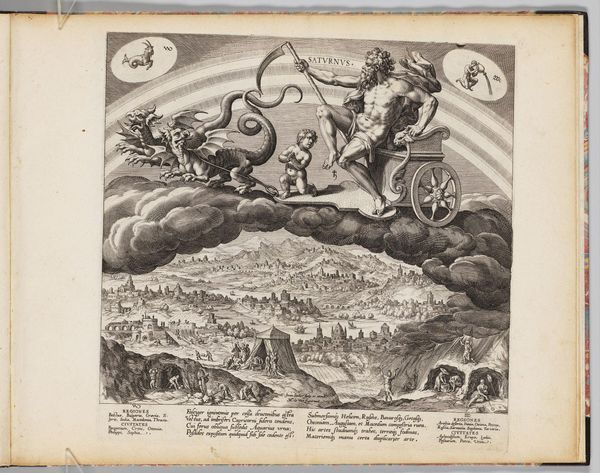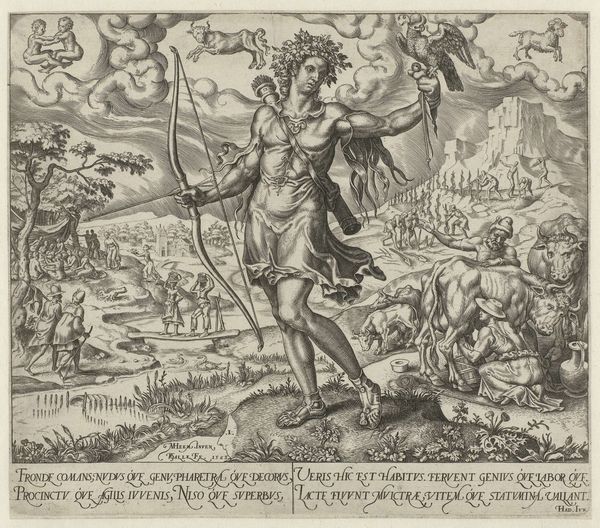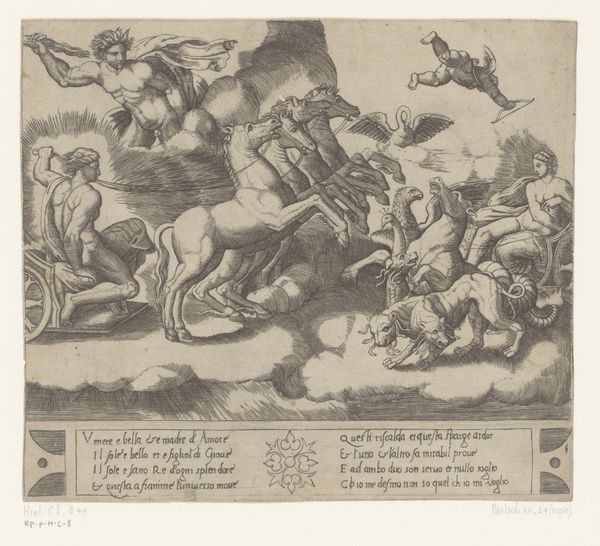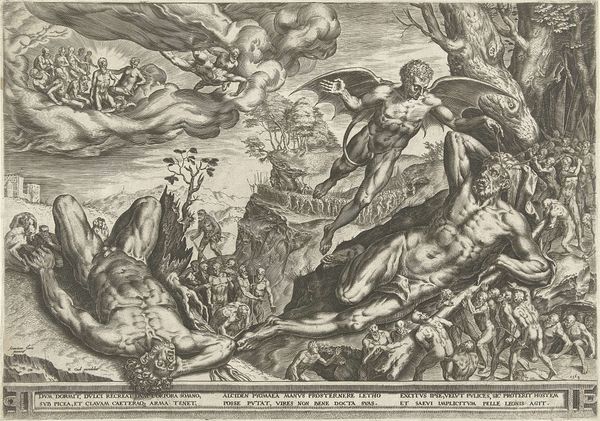
print, engraving
#
allegory
# print
#
mannerism
#
figuration
#
form
#
line
#
history-painting
#
engraving
Dimensions: 239 mm (height) x 277 mm (width) (monteringsmaal), 212 mm (height) x 249 mm (width) (plademaal)
Curator: This is "Mars," an engraving by Harmen Jansz. Muller, dating from between 1566 and 1569. The work is currently held at the SMK, the National Gallery of Denmark. It's a striking example of Mannerist printmaking. Editor: It absolutely is striking. There's so much going on; it's chaotic but precisely rendered. The density of the lines really creates this sense of frenzied energy. I am really drawn to the sky, particularly how that sense of motion created with thin engraved lines, pushes a chariot and its figure to move forward. Curator: Indeed. Muller was a key figure in disseminating Italian Mannerist styles northward. This print reveals how artists employed allegory and classical themes to comment on contemporary society and the constant state of religious wars. Look closely at the foreground— the skirmish among foot soldiers set against the landscape really shows a battle scene. Editor: You can certainly see that war raging here. And the use of engraving… the craft itself echoes that state. Each incision is deliberate, permanent almost. It gives weight to the theme, it isn't just sketched or drawn quickly. There's a commitment in the making. Curator: Right, and this connects to the social context. Prints were mass-produced and served as vital communication tools in early modern Europe, helping disseminate both visual styles and political messages across vast distances. Editor: How amazing that through such relatively modest material, such complex layers of skill, meaning and even criticism were etched into existence! Look, too, at how the lines become denser in shadow, implying volume while the figures below give further clues that the subject is not only mythic but truly human in conflict. It does not exist on any heroic plane, even with all the embellishment, its clear purpose is as a warning to its contemporary viewer. Curator: A brilliant observation about its contemporary viewer, particularly regarding the use of mass communication during a tumultuous time in history! That it functions as an allegorical history painting for both its period, as well as to us today! Editor: Exactly! What began with process now seems to have truly created a statement piece!
Comments
No comments
Be the first to comment and join the conversation on the ultimate creative platform.
